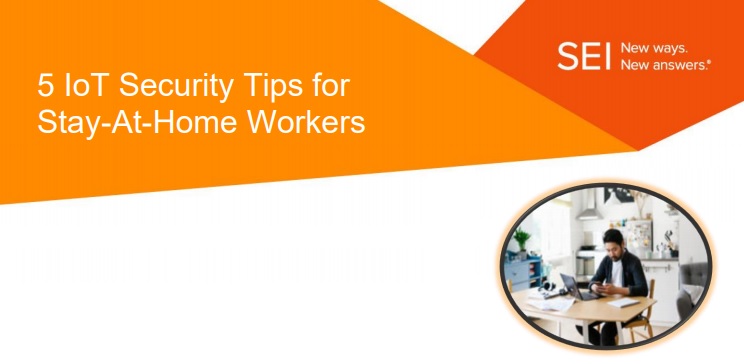Check out SEI’s latest Monthly Tech Tips release below:
As millions of employees work from home because of the COVID-19 pandemic, Internet of Things (IoT) security has become more critical than ever as cybercriminals look to exploit the situation. Follow these IoT security tips to reduce your risk:
1. Turn on security features – and use them. Most IoT devices have security features disabled by default when you buy them. This, along with default credentials that never get changed, creates easy opportunities for cybercriminals.
2. Keep certain IoT devices connected on separate wifi networks. Connect IoT devices such as Ring doorbells or Nest cams to a separate network. This will isolate your home office devices from risks arising from such frequently hacked devices.
3. Use two-factor authentication. When configuring an IoT device, take advantage of 2FA, sometimes called multi-factor authentication (MFA). These setups require a combination of passwords, numerical codes, or biometrics. Many people already use tools like the Google Authenticator on their personal devices for 2FA; it’s the way of the future, and far more secure than the username/password system we all know so well.
4. Read the instructions. Shocking, we know! When setting up a new IoT device, take the time to familiarize yourself with all available security features—and risks. This includes whether the device has a web camera, a microphone, or default usernames and passwords that must be changed immediately. If your new device does have a webcam, consider the location of the device and whether to cover it up.
5. Shut down devices when offline. When devices are not in use, they should be completely powered off. This will ensure they’re not hacked or abused when left unattended. It’s not enough just to put a device into standby mode—far wiser, experts agree, to turn the power completely off.

